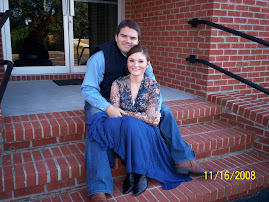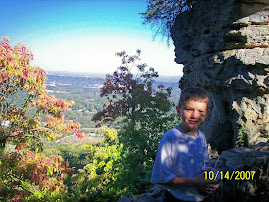While reading this chapter, I realized the importance of the incorporation and integration of texts in today's classroom. I totally agree that literature is used to broaden and enrich students' understandings in all content areas. (pg. 125) This chapter also made me think back... way back... during my earlier experiences with classroom text. When I was younger and in grade school, especially in the younger grades, I don't remember much additional text being read or taught to me and my former peers. To my best recollection, the teachers "stuck" with the required/assigned textbook throughout the school year. We read from chapter to chapter. took tests, and moved on to new material. It seemed like a never-ending cycle. Looking back, I realize now how boring this was.
I think it's wrong to not allow a child to read what interests him/her. I saw this while reading the chapter. This is sooo wrong, in my opinion. Of course, the text needs to be/should be age appropriate, but students should not be given ultimatums regarding texts. I think that too many times, this is what happens and children lose their interest and love for reading. If a child is allowed to read something that interests them, they are more likely to become better readers, which ultimately enables them to become better comprehenders (is that even a word?) I found the short section of motivation and texts very interesting. As we all have learned and know, teachers need to help students make personal connections with text while reading and learning.
The chapter progressed on to list and describe the different types of text. We are all aware of them. I think that informational texts can be integrated in all subject areas and I like the idea of using documents the students see on a daily basis (schedules, checks, receipts, and music transcriptions... just to name a few). Teachers should be careful with using this type of text, however, because too much information may complicate the students understanding and comprehension of what's discussed in class. In today's "rushed" society, digital texts are growing in popularity. I'm using digital text right now and so are you. The Fry Formula is also discussed in the chapter. We've done a little Fry in a couple of classes. I think it's a good tool, but many times it's not used correctly. All in all, teachers should pick a variety of texts that are interesting to students. They shouldn't pick too difficult material, yet not too easy. Let's help change the world and make learning fun!!!
Subscribe to:
Post Comments (Atom)
.jpg)
.jpg)
.jpg)
I also remember sticking to the assigned textbooks throughout the school year. We never used any additional texts to supplement our lessons. The classes were quite boring. I believe teachers back then were either afraid to deviate from the traditional way of teaching, or they just were not aware of the usefullness of different types of texts. I also like the variety of informational texts that are available. Many people think about textbooks, encyclopedias, dictionaries, and texts like that when it comes to informational texts. I'm glad Conley presents other types that are very useful in the classroom.
ReplyDeleteYou said,
ReplyDelete"When I was younger and in grade school, especially in the younger grades, I don't remember much additional text being read or taught to me and my former peers. To my best recollection, the teachers "stuck" with the required/assigned textbook throughout the school year. We read from chapter to chapter. took tests, and moved on to new material. It seemed like a never-ending cycle. Looking back, I realize now how boring this was."
I really am struck by that.
How ridiculous for us to focus on the "process" of reading while never getting kids to it.That would be worse than boring. It would deform learners.
I actually was raised in West Virginia and for all of the different things I might say one thing I cherished was the literature. It isn't that it was poured into me then, I was first in school in 1965. It is just that I mostly had older teachers that somehow in our poverty found a way to bring it.Little bits. One day in 4th grade I read "My Side of the Mountain" I felt I'd accomplished something great and it was so vivid for me. Teaching 4th grade for 8 years, later on in my career I taught the book. I believe the pieces I had came from teachers who brought these loves into my life.
So I see books and literature as gifts we give to kids. I read a book everyday and now in my 1st grade when language is stronger( I teach 2nd language kids) I start a longer book, like Ramona the Brave.Little bit in the AM. It is a way to show kids what they can get if they put in the hard work to learn to read.
In the present times literature is distrusted, but it is what will ultimately be the transformational agents for all of us, reading, thinking, being challenged, inspired....it makes education come alive.
Never stray from the wisdom held here in your own reflections, it's profound.